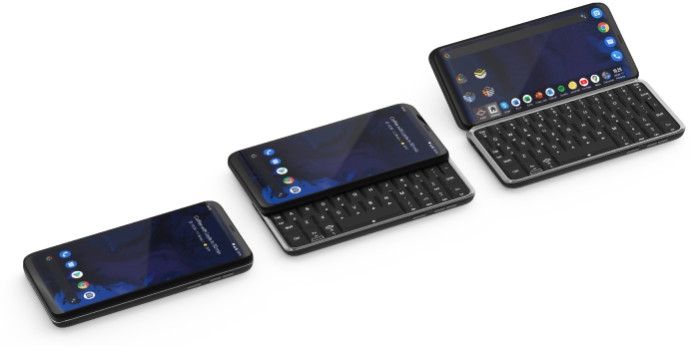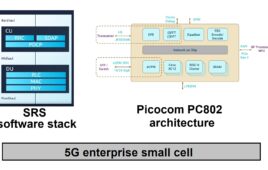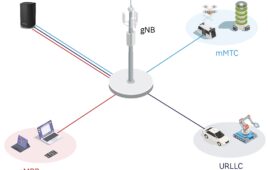Fitting all the electronics into a phone and making them work gets harder with 5G, especially when the phone has two sections. In this video, 5G Technology World interviews Janko Mrsic-Flogel of Planet Computers.
While many of us use phones from the big manufacturers, there are many small players who serve niche markets. Enter London-based Planet Computers and its upcoming 5G phone, the AstroSlide.
Earlier this year, we spoke with mechanical designer Martin Riddeford, who showed us mockups of the AstroSlide, expected to be available in the second quarter of 2021.
What about the electronics in the AstroSlide? Which modem does it use? Does it support beamforming? How does a two-part mechanical design handle heat dissipation and radio interference? What about making it work in both horizontal and vertical orientations. To learn about the AstroSlide’s components and engineering, we spoke with Janko Mrsic-Flogel.
The unique AstroSlide’s mechanical design has an enormous effect on its electronics. Its top section has screens on both sides where the inside screen, with a landscape orientation, is for as a PDA (Figure 1). The outside screen, with a portrait orientation, functions as the phone’s screen. Screens, however, need a PCB to hold them and it support peripheral components. Mrsic-Flogel explains how those three payers fit together, minimizing thickness.

Figure 1. The Astro Slide 5G phone doubles as a pocket computer.
Because 5G phones use more power than 4G phones, engineers needed some clever techniques to remove heat from the MediaTek 5G modem (Figure 2) and other components. In one such clever technique, they use a sheet of graphene to pull heat away. Mrsic-Flogel worked with graphene at Cambridge University, saying “graphene is a fantastic supermaterial. You can achieve, with a very thin layer, fast heat dissipation.” It immediately goes cold when the source of heat is removed. “We still have to see how the AstroSlide will perform when moving a lot of data over 5G.”
While graphene pulls heat away from the electronics, the heat still needs to dissipate outside the case. That’s where metal on the case and the hinges help. The metal hinges also serve to mitigate EMI among the AstroSlide’s cellular, GNSS, NFC, Wi-Fi, and Bluetooth radios. “While we won’t know until the final layout is in place, we do know that the 5G antennas have to be far apart and in plastic pieces away from metal pieces. We’ll need to test the device when open and when closed.” The antennas, including the are mounted in the top section, away from the two USB-C ports on the base. That helps with interference and signal integrity. Signals do have to travel to the upper section because the base is mostly for holding the battery. Signals from the connected are kept separated from the analog-RF section while connecting to the main PCB in the top section.
Then there’s software
The AstroSlide is being designed to dual-boot into Android, its main operating systems, but it can also boot into Linux or Sailfish. Mrsic-Flogel expect the AstroSlide to use Android 11. The AstroSlide will be the first Planet Computers device to operate in both portrait and landscape mode. That brings new problems to solve. “W have to adapt some of our apps to function ins o the landscape and portrait mode,” said Mrsic-Flogel. The company’s software engineers will be adapting certain apps to function in portrait mode when the use us using the unit as a phone. That’s something they haven’t had to do before. “We want to have a very usable device in both portrait and landscape modes.”





Tell Us What You Think!